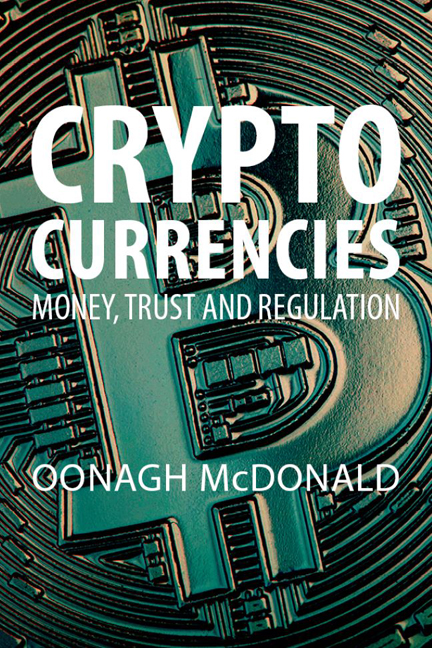Book contents
- Frontmatter
- Contents
- Preface
- Acronyms
- 1 Introduction: Bitcoin beginnings
- 2 New cryptocurrencies and new developments
- 3 Stablecoins: the search for stability
- 4 Initial coin offerings: the “Wild West”
- 5 The regulatory response to ICOs
- 6 Global stablecoins: Libra
- 7 Reactions to stablecoins
- 8 Central banks and central bank digital currencies
- 9 The decline of cash
- 10 Credit and trust
- 11 Epilogue: the crypto winter
- Appendix: smart contracts
- Notes
- Index
7 - Reactions to stablecoins
Published online by Cambridge University Press: 22 December 2023
- Frontmatter
- Contents
- Preface
- Acronyms
- 1 Introduction: Bitcoin beginnings
- 2 New cryptocurrencies and new developments
- 3 Stablecoins: the search for stability
- 4 Initial coin offerings: the “Wild West”
- 5 The regulatory response to ICOs
- 6 Global stablecoins: Libra
- 7 Reactions to stablecoins
- 8 Central banks and central bank digital currencies
- 9 The decline of cash
- 10 Credit and trust
- 11 Epilogue: the crypto winter
- Appendix: smart contracts
- Notes
- Index
Summary
The regulatory responses to stablecoins were at a national level in the first instance. But the advent of Libra triggered the intervention of the international standard setting bodies. Some crytpocurrency enthusiasts like to claim that national and international regulatory authorities are seeking to stifle innovation and are nervous about the potential threat to traditional fiat currencies. That is unfair. Regulatory authorities must clarify the nature of the business conducted by the stablecoin's ecosystem and apply the relevant existing regulations to the stablecoin arrangement on the principle: “same activities, same risks, same regulations”. That is entirely reasonable: if it is the same business, with the same risks, then there is no justification for exempting cryptocurrencies from the same rules.
The responses of individual jurisdictions have inevitably varied from one to another. Yet they are insufficient to handle the risks involved in the use of global stablecoins or smart contracts that apply across jurisdictions. Hence global international standard setting bodies have stepped in to establish standards for the challenges and risks for public policy, oversight and regulation. The first step, however, was to identify the risks from global stablecoins. This became an urgent issue after the publication of the Libra White Paper in June 2019.
THE COMMITTEE ON PAYMENTS AND MARKET INFRASTRUCTURE
The Committee on Payments and Market Infrastructure published its report in October 2019. It points out that recent stablecoin initiatives have highlighted weaknesses in cross-border payments and access to transaction accounts. Cross-border payments have remained slow, expensive and opaque. For stablecoins to do all they claim is only possible using their new technologies, they still have further requirements to meet. If the providers of the global stablecoins really do intend to serve the needs of the unbanked and underserved, then they must provide a safe store of value, and protection and legal certainty for their users, as well as being compliant with all the relevant regulations.
The Report sets out certain general principles to which the design of stablecoins should conform, whatever their design may be.
- Type
- Chapter
- Information
- CryptocurrenciesMoney, Trust and Regulation, pp. 127 - 138Publisher: Agenda PublishingPrint publication year: 2023

